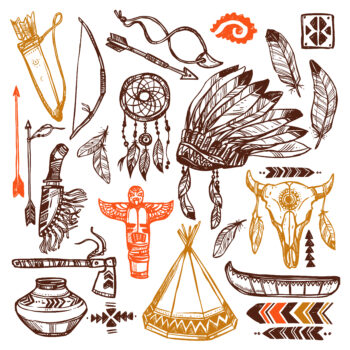In N. Scott Momady’s A House Made of Dawn, a Pueblo Indian man, Abel, returns home after the Second World War. Except, at home, a reservation in New Mexico, he finds himself on the battlefield once more — this time, a more abstract one: the combatants are the modernity of the US and the tradition of the tribe.
Another young man, Tayo, returns to a similarly fractured scene from the same war in Leslie Marmon Silko’s Ceremony and finds that the only way to cure his PTSD and the town’s drought is a return to traditional healing.
An unnamed narrator living in Monatana’s Fort Belknap Indian Reservation succumbs to alcoholism in order to cope with his identity crisis in James Welch’s Winter in the Blood.
These are books that count themselves among the first wave of the Native American Renaissance in literature. Published during the 1960s and 70s, the works of this movement were the first pieces of Native American literature taken seriously by academics. They paved the way for Native American studies in educational institutions. And they conferred upon their writers the label of “activists” and handed them the baton of Native American identity.
Two “waves” later, the fruit of the current crop of Native American writers is called the New Native Renaissance. The landscape in which these stories are set has shifted into urban spaces. But the wounds the characters carry are similar to those of their predecessors, only exacerbated.
The overwhelming sweep of modernity has done little to mitigate the damage caused by the Native Americans’ violent partition from their roots, the source of their identity and culture, and their lands. Instead, it has only added to the scope of what they have to grapple with.
The consequences that the arrival of the Europeans in the Americas had on the continents’ native dwellers is a well-documented history. US laws over the years since the nation’s establishment detail the forced relocations of Native American tribes that were conducted to address the so-called “Indian Problem”: from open lands into reservations, then into other reservations, and then right off them.
However, a significant disjoint exists between the idea of Native Americans in the public imagination and the real experience of this traumatic uprooting. While not absent from the pages of literature, Native Americans have been depicted in them in a rather odd manner.

White/European writers have portrayed Native Americans in a gamut of lights, from savage and uncivilized to placid and mysterious. However, there is no real difference among the various tribes, except for their names and the places they are from; the “Red Indian” was overall a more concrete identity than the Navajo or the Cherokee or the Cheyenne. Dignity is magnanimously bestowed onto them in moments of sound defeat at the hands of white colonizers, even as, jarringly, this loss is justified and right (for instance, in James Fenimore Cooper’s The Last of the Mohicans).
On the other hand, even as these inaccurate depictions of Native Americans ran rampant, their own oral traditions of storytelling continued within their communities. Myths and legends were handed down through the generations until the nineteenth century witnessed the first Native American attempts to project their voices into the written world.
Oral legends were transformed into the first Native American novel, The Life and Adventures of Joaquin Murieta by Yellow Bird/John Rollin Ridge. Elias Boudinot’s Address to the Whites recorded the discontent of the Native American peoples with their treatment at the hands of the government, introducing protest to the ambit of Native American literature.
Autobiographies became another means to testify to and record the Native American experience, which diverged sharply from its portrayal by white writers. The most powerful of these, The School Days of an Indian Girl by Zitkala-Sa, was published at the turn of the century.
However, these still did not catch the public attention. That was captured only half a century later by the emergence of the writers of the Native American Renaissance. They vigorously reclaimed their identities and histories. They turned on in its head the myth fabricated by mainstream literature that the Native Americans had accepted and adjusted well to the lot heaped on them by the government authorities of the countries now flourishing on their ancestral lands. Writers such as Momady, Welch, Silko, Sherman Alexie, Louise Erdrich, and Joy Harjo established themselves as the new authorities on the Native American experience.
Today, this legacy is carried on by the writers like Tommy Orange, Terese Mailhot, and Billy-Ray Belcourt, those of the New Native Renaissance. Their works also weave together in different ways the threads spun by the first Native American writers: fiction, protest, and autobiography.
